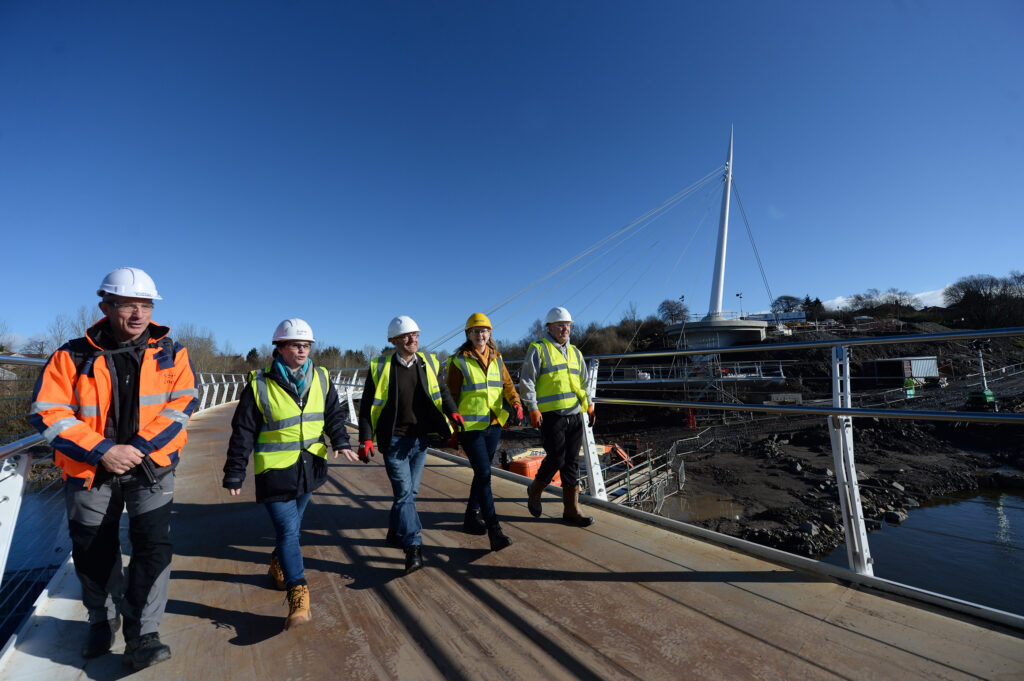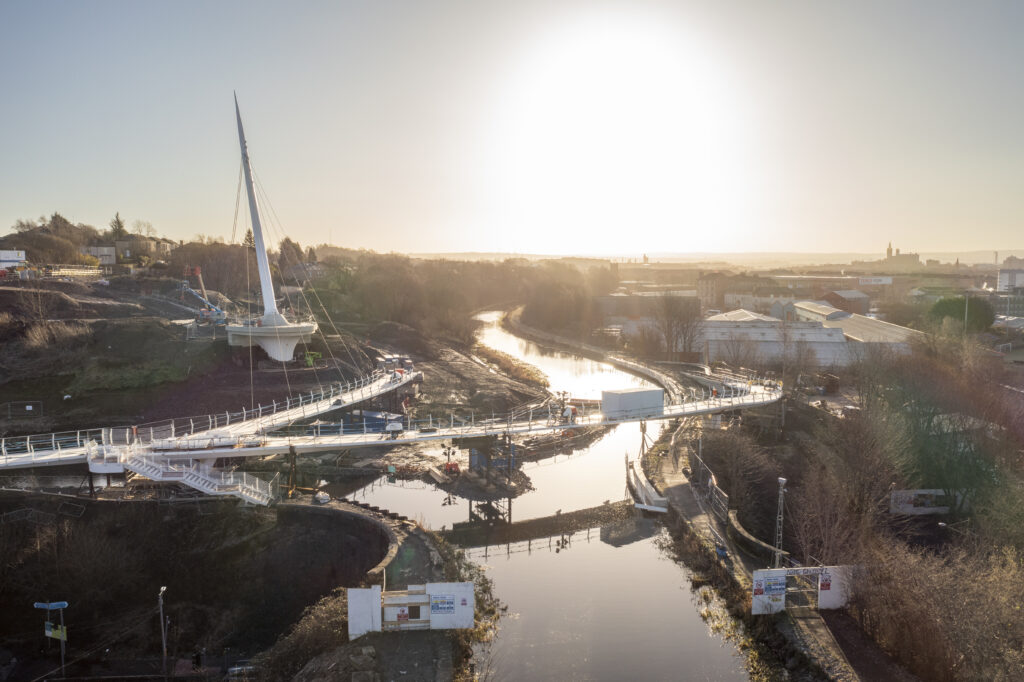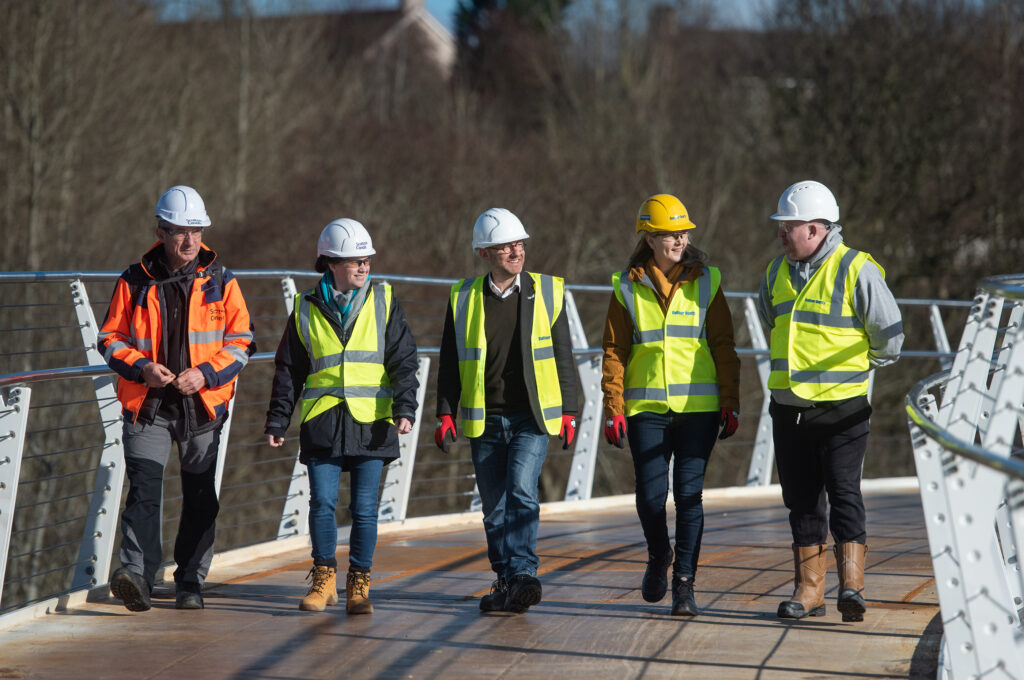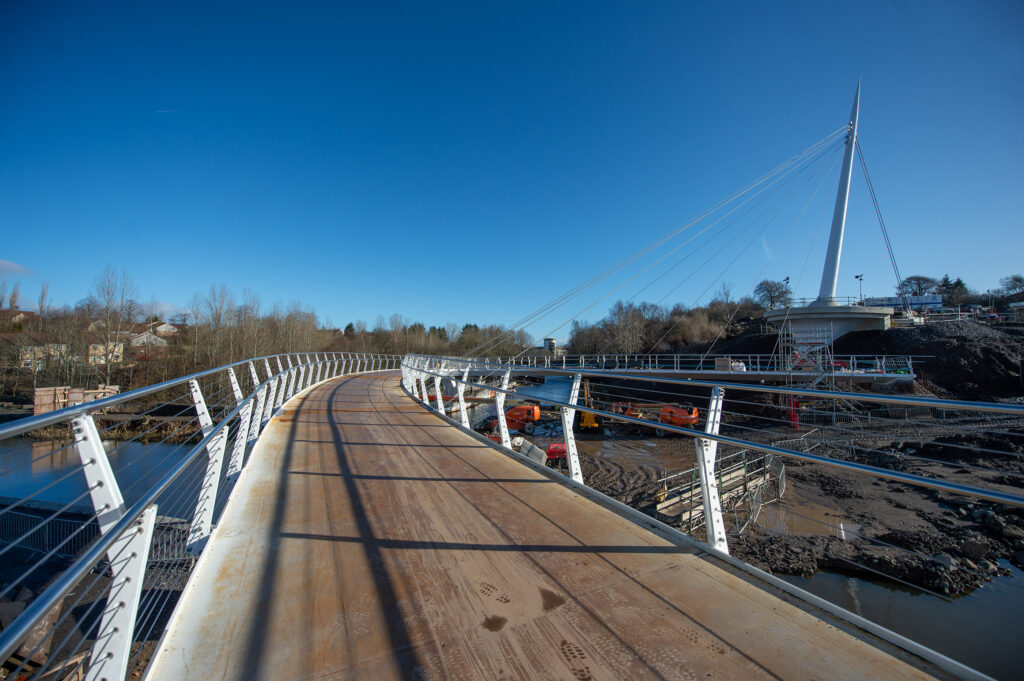
An iconic design and construction
The completed construction of Stockingfield Bridge marks a significant milestone for the £13.7 million Places for Everyone project.
Once complete, the bridge will connect the communities of Maryhill, Gilshochill, and Ruchill in North Glasgow for walking, wheeling and cycling for the first time.
A major boost to health and wellbeing, the new bridge will give local residents stunning views of the city and a convenient access point to the Forth & Clyde Canal in a way not before possible.

The uniquely forked structure of the bridge not only maximises the number of active travel connections available to users, including improved accessibility to Glasgow west end and city centre, but also serves as a stylish centrepiece to the restored greenspace in the area.
Added public realm improvements, such as seating areas and tree and shrub planting, will help build a sense of community in the area and offer shared space for relaxation and socialisation.
The imminent addition of community artworks along the route will further consolidate the value of the impressive structure.
For those walking, wheeling or cycling further afield, the completion of the bridge also links together the smooth and continuous route stretching the length of the canal from Bowling on the Clyde to Edinburgh in the east via National Cycle Network Route 754.
The inaugural crossing

To mark the construction of Stockingfield Bridge, representatives from Scottish Canals, Glasgow City Council and Sustrans joined Minister for Zero Carbon Buildings, Active Travel and Tenants’ Rights, Patrick Harvie MSP as well as local residents to be the first to cross Stockingfield Bridge.
Minister for Active Travel Patrick Harvie said:
“It’s fantastic to see the Stockingfield Bridge take final shape and reconnect communities across the north of Glasgow. The Scottish Government has provided over £13 million to deliver this project because it unlocks real change in the opportunities that people will have to travel more actively – improving health, wellbeing and protecting our environment.
Patrick Harvie, MSP, Scottish Green Party
The project is being delivered by Scottish Canals with funding from the Scottish Government through Sustrans’ Places for Everyone scheme, as well as the Glasgow City Council’s Vacant Derelict Land Fund.
Karen McGregor, Portfolio Director for Sustrans, said:
“The completed construction of Stockingfield Bridge creates invaluable space for walking wheeling and cycling, and represents a significant improvement to the health and wellbeing of the people of North Glasgow.
Karen McGregor, Sustrans
“Not only does this new connection create a safe and convenient active travel route between Ruchill, Gilshochill, Maryhill and on to the west end and city centre, it opens up a scenic setting for residents and visitors in the area to relax and enjoy what the Forth and Clyde Canal has to offer.”
Richard Millar, Chief Operating Officer at Scottish Canals, said:
“Stockingfield Bridge will greatly boost active travel alternatives for people travelling about the city, making a walking or wheeling commute to work a viable and enjoyable experience.
For the first time, locals will be able to move effortlessly from these three communities to the city centre and the west end, providing new access to amenities, services, and employment possibilities. The project’s community-led art element will make Stockingfield a completely new destination, attracting new people to visit and raising the reputation of this section of the city to new heights.”
Richard Millar, Scottish Canals
Community artworks to come

People travelling by foot and wheel will soon be able to enjoy everything the project has to offer.
Final works include groundwork initiatives along the towpath, which incorporates a new recreational space and the delivery of 8 community artwork installations, celebrating the proud industrial history of the area.
All of the artworks have a local link along with community participation. They range from sculptures commemorating the area’s industrial background to ceramic mosaics created by the community and metalwork honouring the role of disabled people in North Glasgow.
The project is due to be completed during the 200th anniversary of the Union and Caledonian canals in September, when the bridge will open to the wider public.
The conclusion of this landmark undertaking will mark a new era for Scotland’s inland waterways, one that prioritises active travel, health, and community.